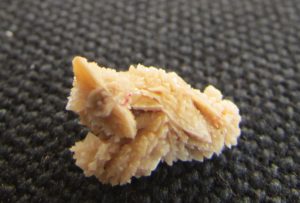Kidney stones and pain
Kidney stones or renal calculus can cause much pain and discomfort, especially when the warning signs are ignored. If a stone has grown to at least 3 millimeters it can block the ureter and cause even more pain, usually in the lower back, right or left flank, or groin. The pain can last anywhere from 20 to 60 minutes (or longer). Unfortunately, kidney stones can be recurring, but understanding the warning signs may help individuals avoid a great deal of pain and suffering.
Several signs never to ignore
Understanding warning signs is vital for quick diagnosis and treatment of kidney stones. Below is a list of symptoms that kidney stone patients may experience. If you are experiencing these symptoms, it is important to seek immediate medical help.
- Severe pain – Pain that prevents patients from finding a comfortable position, including severe pain in the lower back, abdomen or groin. If pain is not relieved by changing positions, it could be a kidney stone. Depending on its size, the stone may be lodged somewhere between the kidney and bladder. The pain can come in waves, be a stabbing pain or throbbing pain. Pain can last as little as 20 minutes or as long as an hour (or more). If the pain does not abate, go to the emergency room.
- Nausea and vomiting – If the pain is so severe that it is causes nausea and/or vomiting, the patient should go to an emergency room as soon as possible. Oftentimes described as the worst pain of their lives, patients with kidney stones should not hesitate to seek treatment.
- Fever and chills – Fever and chills most often happen when an infection has set in. Again, it is important to seek immediate help to lower the chances of developing sepsis.
- Blood in the urine – Visible blood in the urine (hematuria) is an indication that a stone has started to pass from the kidney to the bladder and has become lodged (likely in the ureter, a tube that connects the kidneys to the bladder). Since the ureters are usually 3 to 4 mm in diameter, any stone larger than this can become stuck. If not taken care of promptly, the stone can tear the ureter introducing blood into the urinary tract.
- Difficult and painful urination – Blockage in the ureter can cause difficulty in passing urine. If urine cannot pass, it can cause an infection. The stone may also be in the urethra, the tube that passes urine from the bladder outside the body.
Kidney stones are generally silent (asymptomatic) until they begin to pass. It’s important to know what signs to look for in order to receive swift medical attention.
Contact Urology Austin to schedule an appointment with one of our providers.


Comments are closed.